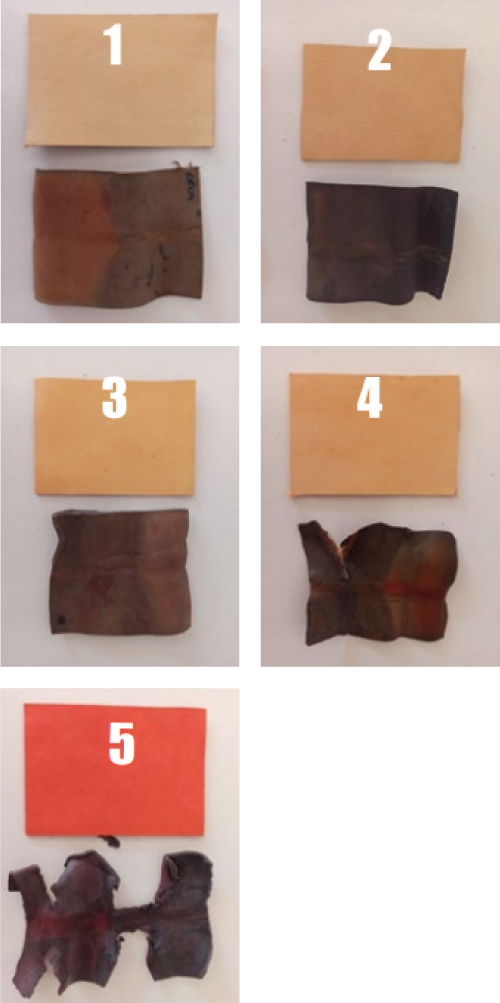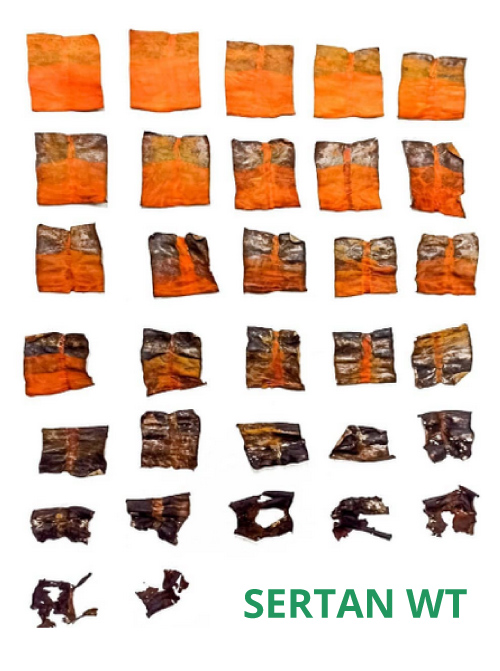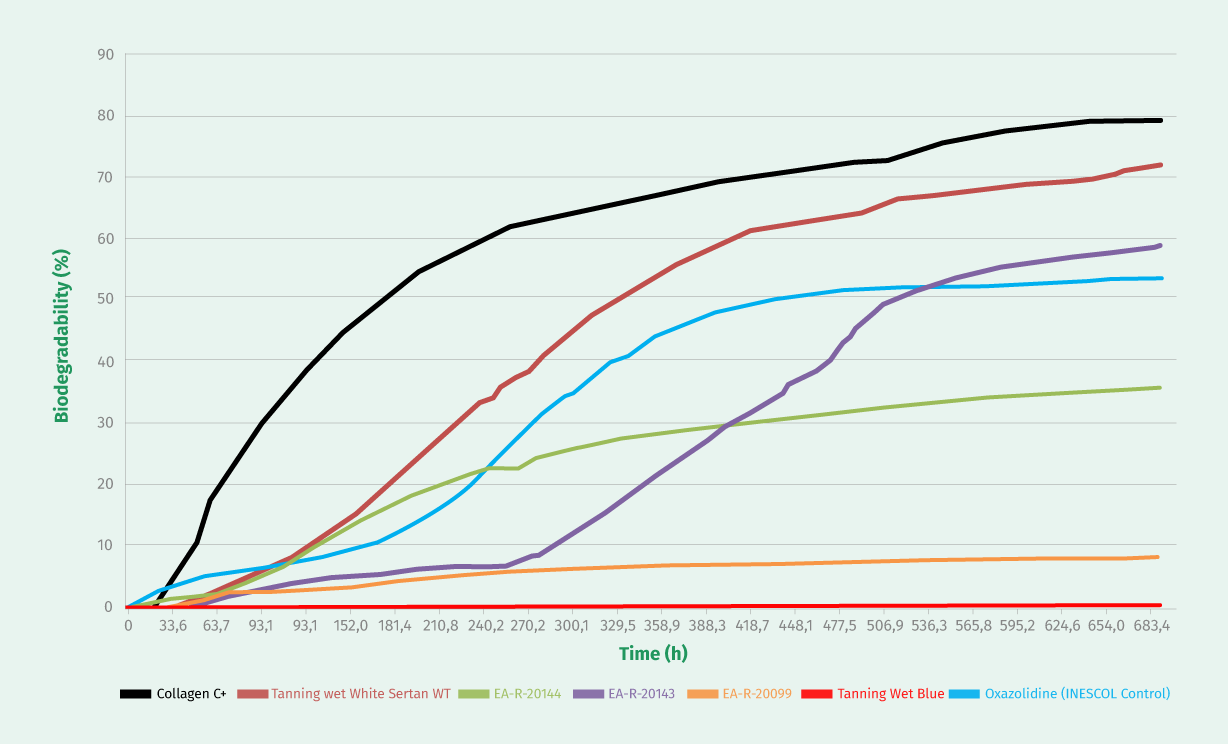Welcome to the green side of leather!
We are proud to introduce you to SERTAN WT a product designed to produce ecological tanned leather
ECO Tanning
Quimser continues striving to achieve highly biodegradable leathers. We have all heard that there is a demand for “eco-leather”, “metal-free” and “chrome-free” leathers, but what is the market really looking for? And what is the true nature of these ‘eco-friendly’ leathers?
Added to the issues relating to the true nature and characteristics of these eco-friendly leathers there is also another strong competitor trying to make inroads in the sector and being heralded as a new alternative to leather: “vegan leather”, made with synthetic materials (plastic and PVC) which is gaining market share due to the fact that it is not of animal origin. It must be made quite clear that natural leather is a waste that is recycled to give it new life. But can we consider leather to be an ecological material which is 100% renewable? Do farmers and tanners respect the environment and use biodegradable and environmentally friendly materials? Leather is currently in a state of flux. A transformation is being sought in order to carry out processes that respect both the health of the population and the environment.
Since the tanning industry is asking us for diverse products using different labels, we have decided to define below some key concepts, products and processes.
Chrome Free
These are leather articles tanned with aluminium, synthetic tannins, aldehydes, vegetable extracts and other products that most of the market considers ecological due to the simple fact that chrome is not used, without taking into account the biodigradability of the treated leather and whether it is compostable or ecotoxic. Only chromium is removed, consequently it is a contaminating and toxic material which results in non-biodegradable leather. Many of these products are petroleum based, with a high pollutant load.
Metal Free
Metal free tanning includes the elimination of all metals (chromium, aluminium, titanium, zirconium, iron, nikel…). The use of this term is misleading as it classes all metals (light and heavy) equally and categorizes them as toxic without analyzing the global ecological impact of the products. The use of this term is dangerous as it assumes that all metal free products and processes are environmentally friendly or that the resulting leather is biodegradable, which may be completely untrue.
Ecological
These are leathers that have been tanned with eco-friendly products, using processes to obtain biodegradable leathers with very little or no impact on the environment. In these cases, the resulting waste does not create any environmental problem and the leather skin is recycled to give it new life.
Take a look at this study that compares normal leather with vegan leather:
Comparison of the Technical Performance of Leather, Artificial Leather, and Trendy Alternatives
Chemical
Origin
% in tanning
Price
TS (ºC)
Colour in tanned leather
Light fastness
Negative points
Toxicity
Biodegradation time
Compostability
Waterwaste problem
ZDHC-MRSL restrictions
SERTAN WT
VEGAN LEATHER
WET WHITE
Napthaline
Aldehyde
Disulphone
Triazine
VEGETAL EXTRACTS
Quebracho
Chestnut
Tara
Others
WET GREEN
ALUMINIUM
MINERAL
Titanium
VEGAN LEATHERS
PU
PVC
Polymer-Resin
Other
SERTAN WT, your eco tanning companion
Quimser’s laboratory (R+D+I) cares about finding alternatives and solutions to help the future of the sector through actions such as:
s![]() Eliminating the use of chromium
Eliminating the use of chromium
![]() Wastewater with low environmental impact
Wastewater with low environmental impact
![]() Reducing process time (hence electricity consumption)
Reducing process time (hence electricity consumption)
We have developed SERTAN WT: an environmentally friendly product that does not generate problems with wastewater. The aim is to respond to the points highlighted and provide solutions in a world that is increasingly demanding as regards to reducing the negative impact that processes and products have on the environment.
With SERTAN WT we obtain white leathers, with very low or non-existent oxidation, and a shrinkage temperature of 80-85. According to tests carried out in certified laboratories, the resulting leather is highly biodegradable. It is a zeolite-based product. The Manufacturing Restricted Substances List (0-MRSL ZDHC V 2.0 2019) does not prohibit its use.
At Quimser we promote this product as the best alternative to obtain ecological leathers, since it is a component that is not restricted and has multiple uses in other sectors where it is considered an eco-friendly substance: food, agriculture, cosmetics, etc
Chemical composition Organic, and inorganic salts
Appearance Solid powder
Colour Ivory
pH 4,0±0,5
Charge Cationic
General properties
SERTAN WT is a chemical product free of phenol, naphthalene, sulfone, aldehyde and formaldehyde. In the retanning, combined with vegetable tannins, the leather obtained has extra softness with increased fullness without altering its vegetable leather character.
SERTAN WT gives excellent filling effect in the loose parts of the hide. It can minimize the use of polymers and resins. It also eliminates the use of glutaraldehyde based tanning agents. It is compatible with other anionic synthetic, natural tanning and retanning agents. Leather tanned with SERTAN WT has outstanding dyeing ability with brilliant dyeing effect and good uniformity. It can also be used as a bleaching agent in the retanning process.
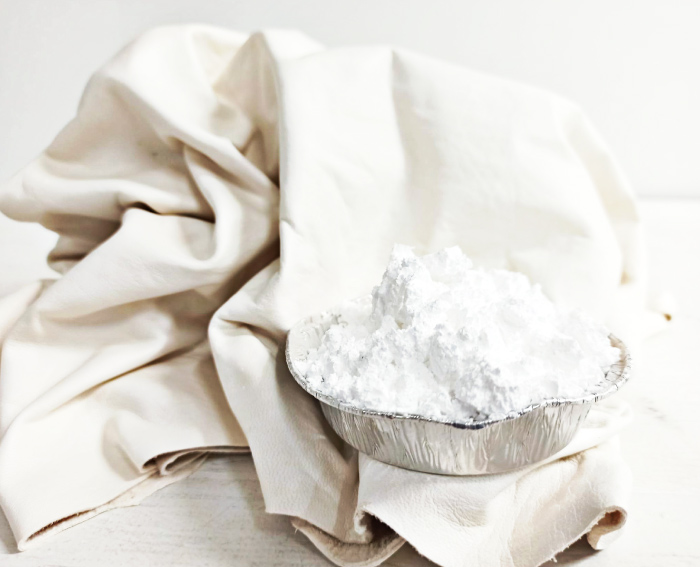
Animal skin is a natural product that the leather industry transforms into stable material for the manufacturer of clothing, upholstery, footwear, among other goods. Once tanned and retanned, the leather becomes more resistant to environmental degradation depending on the products used.
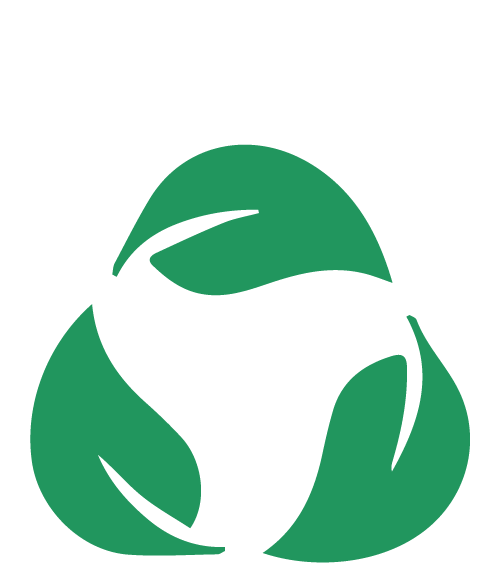
What does biodegradable mean?
The adjective biodegradable describes those substances that are capable of being broken down naturally by the action of living things, such as certain microorganisms, fungi, and bacteria.
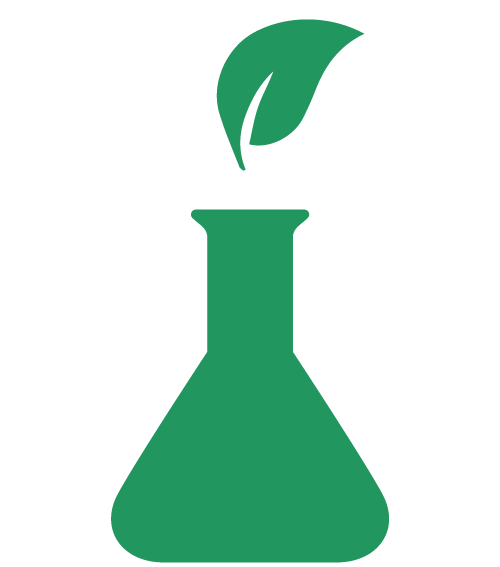
When is a product biodegradable?
We refer to a product or material that is biodegradable when it can descompose naturally and ecologically in a relatively short time, without contaminating the environment and becoming a non-toxic compost for the earth.
Biodegradable leather tests
Biodegradability test of sheepskin
We selected different skin samples in order to find out how long it takes for them to decompose, comparing each article and checking the differences of biodegradation to compost.
STEP 1
We sampled 4 tanned and retanned sheepskins which had been through different processes with varying products to compare their level of biodegradability.
1. Tanned with Chrome. Retanned with syntans.
2. Tanned with vegetable extracts and aldehyde. Retanned with syntans.
3. Tanned with SERTAN WT. The skin was dried without retanning.
4. Tanned with SERTAN WT. Retanned with vegetable extracts.
STEP 2
We buried the rolls of leather inside the garden compost on
8th July, 2020. We left the containers closed and at a constant temperature and constant indoor humidity for about 50 days.
STEP 3
We checked the leather rolls and monitored their evolution on 25th August, 2020. After being kept for 50 days in optimal composting conditions of humidity and temperature, the leather tanned with SERTAN WT (num 4) did not show any skin residue or evidence of it, which indicates that the skin sample had decomposed 100%.
CONCLUSIONS
Samples number 3 and 4, show a high degradation in garden compost. According to the products used in number 3 and 4:
· Tanning and retanning chemicals have no wastewater impact compared with the products used in samples 1 and 2.
· The product’s toxicity in leather is also very low.
· Biodegradation is as expected.
· Degraded products do not have an impact on the soil. They are compostable and non-toxic. The total environmental impact of skins tanned with SERTAN WT is much lower than the total environmental impact with leathers tanned with Chromium, Mineral salts or petroleum derivates (syntans, aldehydes, resins).
We conclude that the leathers have decomposed in a highly satisfactory manner and the environmental impact in the tanning process makes SERTAN WT the best choice.
Biodegradability of cowhide
STEP 1
We sampled 5 bovine crust leathers, which had been tanned using different processes:
1. Tanned with chrome and retanned with standard market products.
2. Tanned and retanned with vegetable extracts and natural polymers.
3. Tanned with SERTAN AL and retanned with standard market products.
4. Tanned with SERTAN WT and retanned with standard market products
5. Tanned with SERTAN WT and retanned with vegetable with extracts and natural polymers
STEP 2
We buried the samples in compost substrate on 2nd September, 2020 and unearthed them on 5th October, 2020.
STEP 3
We buried the samples in compost substrate on 2nd September, 2020 and unearthed them on 5th October, 2020.
CONCLUSIONS
Sample no. 5 (EA-R-19170) has been retanned with natural polymers to have the minimum impact on the environment, both in terms of the resulting leather and the products used throughout the process.
Biodegradability of sheepskin leather
STEP 1
We cut 35 pieces of sheepskin leather tanned with SERTAN WT and retanned with our standard eco-friendly process.
STEP 2
We made rolls with the sheepskin cuttings and introduced them inside a garden compost at constant indoor humidity and temperature.
STEP 3
We took out 3 samples per week. We kept and dried them in the same order as they were picked. We started the test on 14th October, 2020 and finished on 8th January, 2021. The test lasted for a total of 80 days.
CONCLUSIONS
With each passing day the sheepskin leather in the compost, biodegraded more and more. Our tanning and retanning processes achieve excellent biodegradability and compostability since the sheepskin leather was able to disappear in 60-80 days.
Certifications
DETERMINATION OF RELATIVE BIODEGRADABILITY PERCENT OF LEATHER USING AEROBIC MICROORGANISMS
Test carried out according to UNE-EN ISO 20136 Leather – Determination of the degradability by microorganisms (ISO 20136: 2020)
Accumulative average carbon dioxide evolution over time until plateau displayed graphically as lag-phase and slope (rate):
Collagen C+
Tanning with SERTAN WT
EA-R-20144 - Eco Lady Bags
EA-R-20143 - Eco Shoes
EA-R-20099 - Vegetal article
Tanning Wet Blue
Oxazolidine Tanning
% Absolute Biodegradation
% Relative Biodegradability*
* For the calculation of % relative biodegradability, the % absolute biodegradation of collagen obtained in the test is taken as 100%. The % relative biodegradation of each sample is calculated based on the value corresponding to 100% relative biodegradability of collagen.
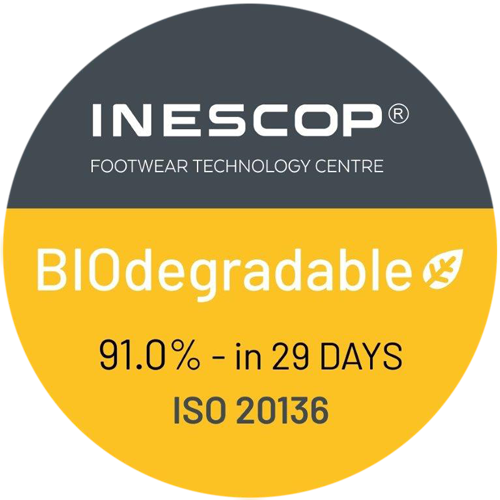
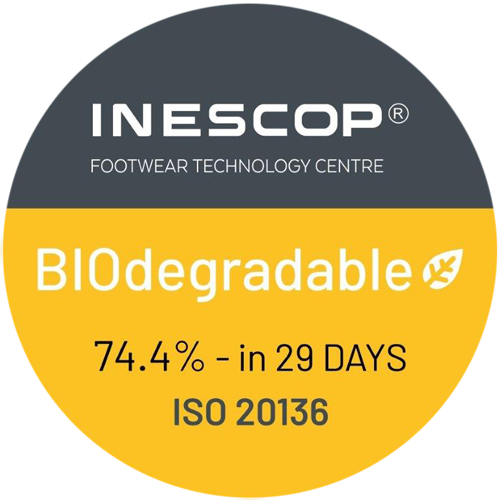
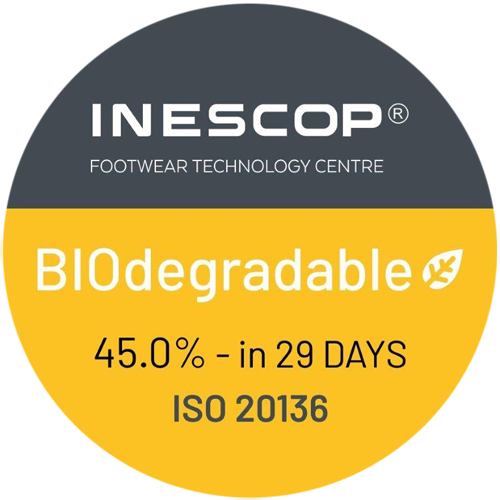
Would you like more information?

